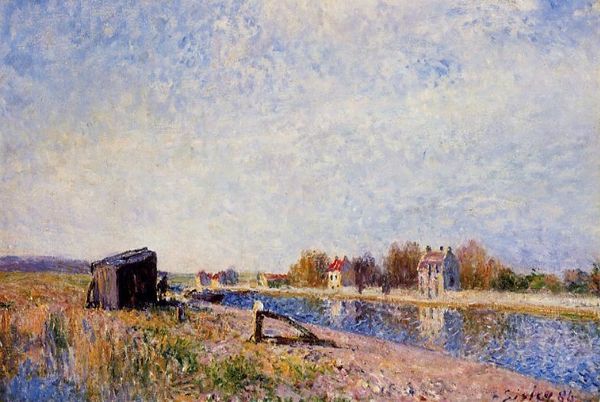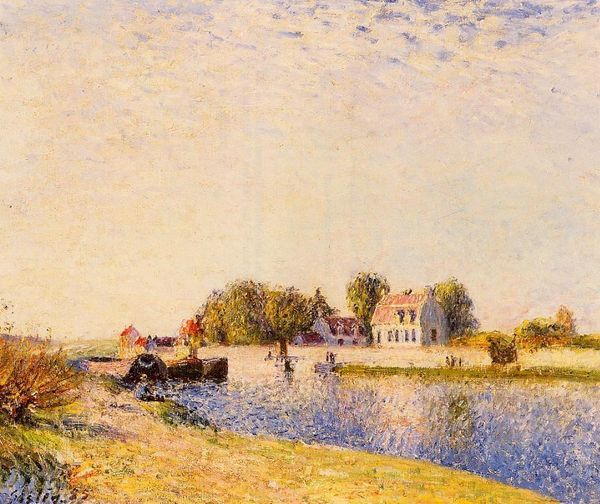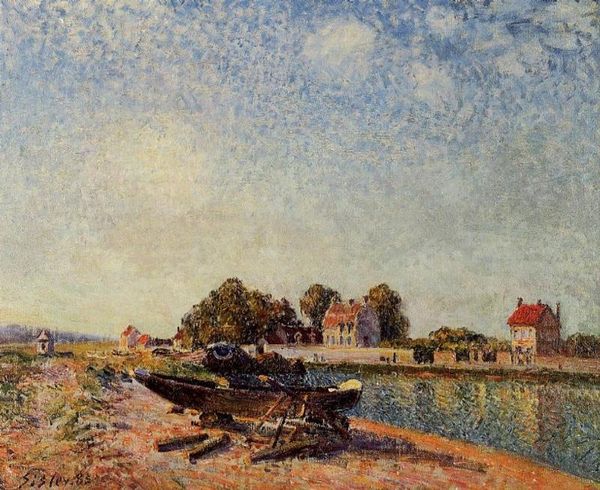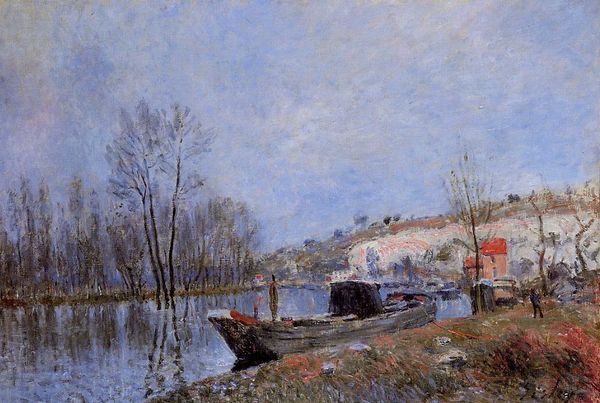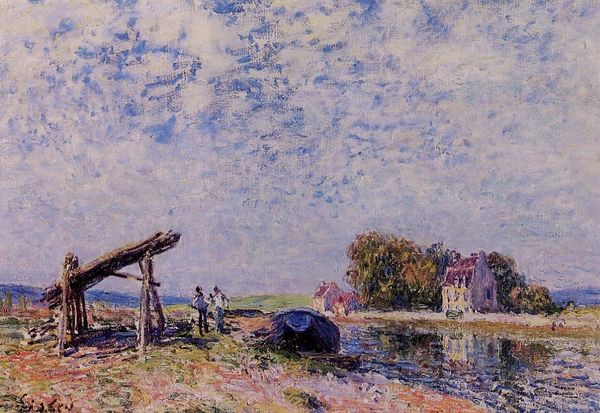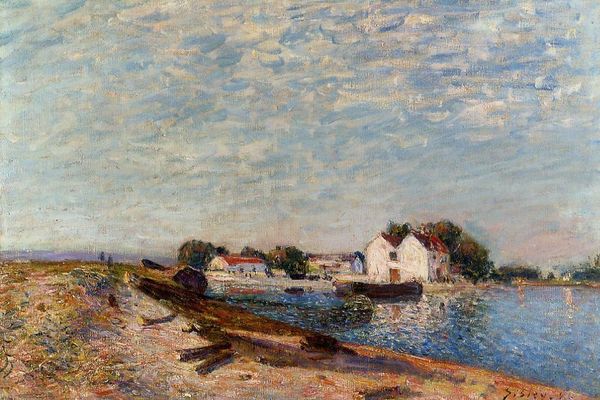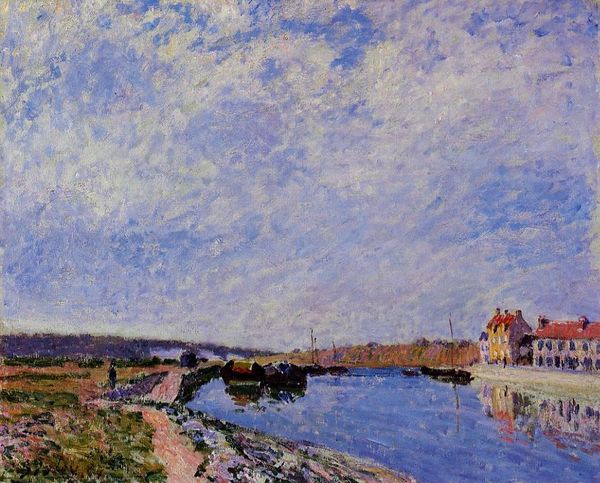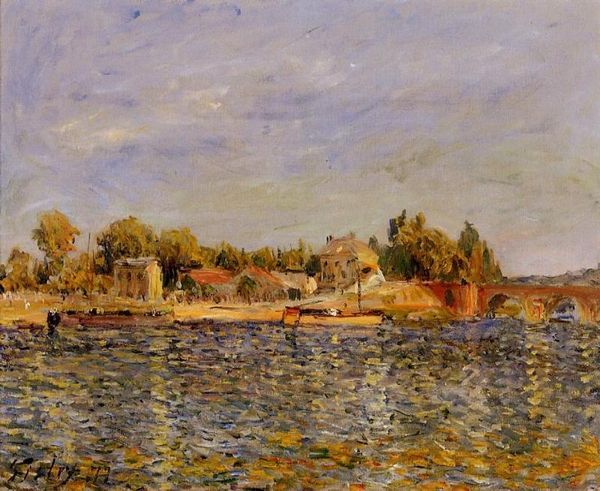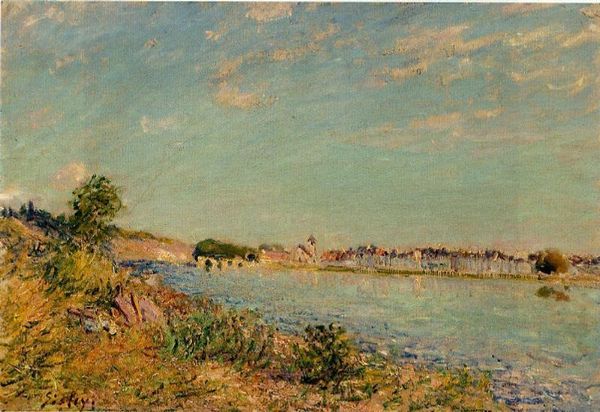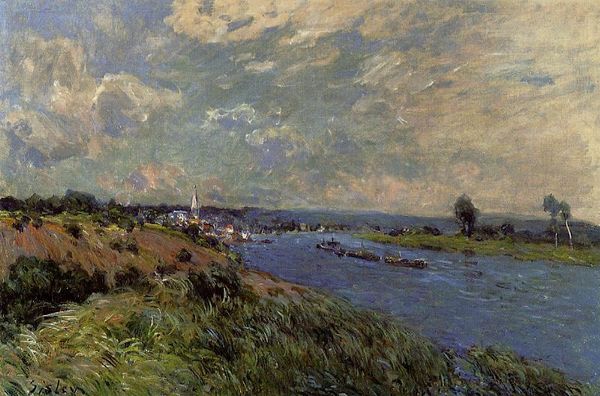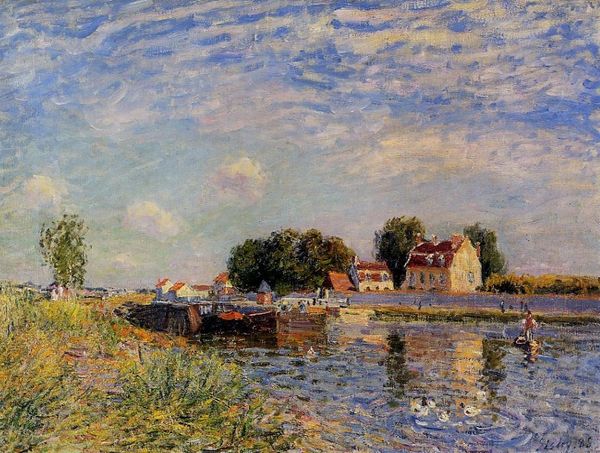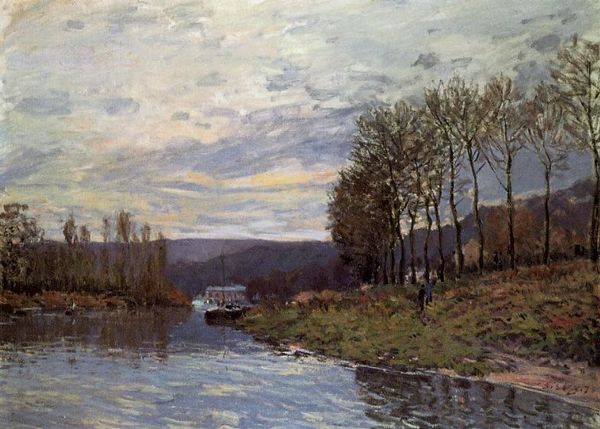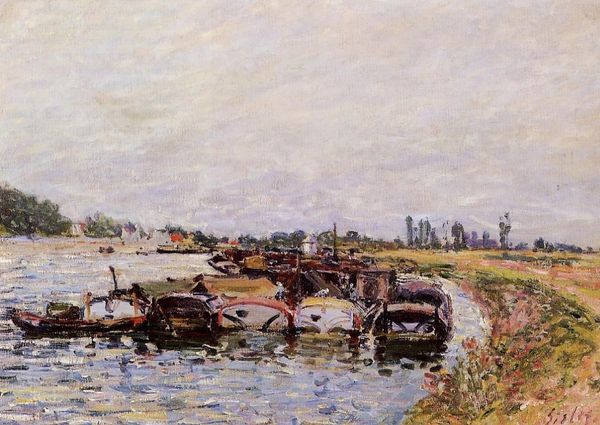
painting, plein-air, oil-paint
#
boat
#
rural-area
#
painting
#
impressionism
#
plein-air
#
oil-paint
#
landscape
#
river
#
impressionist landscape
#
nature
#
oil painting
#
water
Dimensions: 38 x 55 cm
Copyright: Public domain
Curator: Alfred Sisley’s "The Loing Canal," painted in 1884, captures a serene moment along this waterway in France. Look closely, and you can almost feel the stillness of the day. Editor: It’s quiet, isn’t it? The water, rendered with these flecks of blue and white, seems to absorb all sound. And those boats...almost ghostlike in their stillness. Curator: Sisley was dedicated to plein-air painting, a method that really gained momentum through the Impressionists. His practice was very much dictated by his choice of working outdoors directly within the landscape. Think about what it meant for him to set up his easel and engage in a direct exchange with the light and atmosphere of this location. Editor: That immediate engagement really comes through in the brushwork. You can see the rapid, broken strokes building up the surfaces of the buildings, foliage, and even the water. There's very little blending; each stroke retains its individual quality, pointing back to the physical act of applying the oil paint onto the canvas. It highlights labor in the means of production. Curator: Indeed. It's part of what defines Impressionism—attempting to capture the fleeting qualities of light and atmosphere. He participated in the very first Impressionist exhibition of 1874, although today, many have subsequently written about Sisley's place and his overall contribution to Impressionism relative to his colleagues, such as Monet and Renoir. Editor: There's something grounding about his commitment to the everyday scene. Sisley isn't seeking the sublime, it seems, but he carefully attends to the realities of working-class life, even in such an apparently tranquil scene. One can almost hear the quiet labor involved in plying those boats. It acknowledges the economic underpinnings of rural France, rather than romanticizing them. Curator: Absolutely. And what I appreciate is the understated quality. There's an elegance to this painting that really endures, reflecting on the changing landscape as a source of contemplation and aesthetic experience for its viewers, and the people depicted here. Editor: It makes you consider the artist’s hand, the quality of the pigment, the weave of the canvas…how all those material things work together to conjure this impression of quietude. A meditation on the way everyday experience is translated and circulated. Curator: I think, in its own way, it does that effectively and invites a lingering reflection on our relationship with these sorts of landscapes today. Editor: Indeed, a thoughtful, painterly work.
Comments
No comments
Be the first to comment and join the conversation on the ultimate creative platform.
